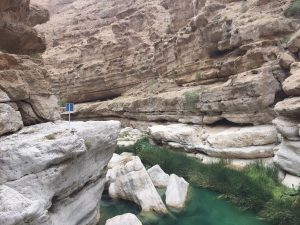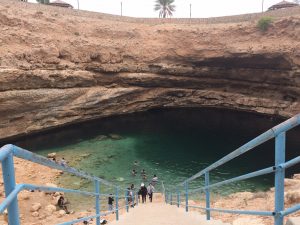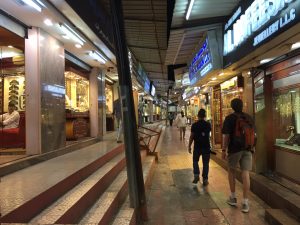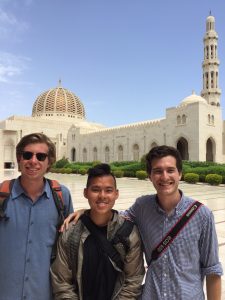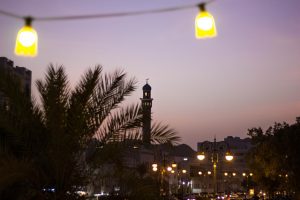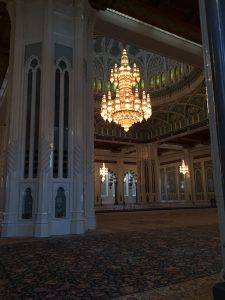My name is Kyle Scheuring and I am a junior here at Loyola University Chicago. I study English Literature with a minor in both Arabic Language and Studio Art.
While studying in Amman, Jordan at the University of Jordan, two friends and I had the opportunity to spend a weekend in Muscat, Oman. Although the trip overall was incredible, there was one major factor we didn’t take into account before going. It was July. Despite growing up in a desert myself, and spending the summer in Jordan (which is also very hot), I had no idea just how humid and sunny Oman was. I mention this aspect of Oman first because it is the first thought going through everyone’s mind as they step off the plane: “Where is the nearest air conditioned building?”
Although the weather was quite a shock, a bigger surprise was just how small of a city Muscat is. I am sure this observation is skewed because I spent most of my time in Amman, a sprawling, hilly metropolis. However, the size of Muscat ultimately became one of my favorite aspects of the city. After only three days, we could navigate the highways by car and felt confident enough to travel out of the city to see all of the incredible natural wonders of Oman.
We took a day-long trip to hike in Wadi al-Shaab. Wadi al-Shaab is located off the coast about two hours south of Muscat. When we first arrived we paid the local ferrymen to take us across the river that carved the gorgeous wadi (وادي = valley). We hiked through this valley on the edge of the river for about two hours before we reached the goal of the hike. A few miles in, the trail ends at a river. While most hiker’s instincts would be to turn around, the interesting part of Wadi al-Shaab, is that half the hike is actually a swim. Everyone leaves their belongings at the shore, and they swim through caves and canyons in crystal clear water. At the end of the swim, there is a massive, 30 ft. waterfall and a deep pool below. Climbing and cliff jumping is the main attraction once at the waterfall.
On our way to Wadi al-Shaab we also made a pit stop at a massive sinkhole about half a mile off the coast. Although a quick stop, it was a lot of fun to swim/cliff jump with the locals who loved to practice Arabic with us.
In Muscat itself we encountered some of the most amazing sea food, freshly caught that morning. At night we would roam the famous Suuq (market) that stretched the length of a neighborhood. There is an entire section with about 100 gold stores selling jewelry, sculptures and trinkets.
Another major site of Muscat is the Sultan Qaboos Mosque. Once the largest mosque in the world, the Sultan Qaboos Mosque has a chandelier that stretches three stories high and weighs 21 tons. After an hour or so of wandering around this incredible holy site, a man, who wanted to bring us to the welcome center, approached us. There, we were given free dessert and tea. The man then sat with us and answered any questions we had about the mosque or Islam.
While Muscat had incredible mosques and gorgeous nature sites, what stood out the most was the genuine kindness of the people. Although we didn’t have much time to form lasting relationships, at every stretch of our road trip down south, people gave us directions, helped our conversational Arabic (thankfully the dialects were similar), took pictures with us, shared stories, and told jokes. As we were leaving for the airport, I felt inclined to ask our taxi driver why in our entire three days in Muscat we never once saw a police officer, let alone a gun. The look of confusion on his face will always be in my memory. “Why would we need guns? I love my country and I love its people. I would never want to harm either of these.”


